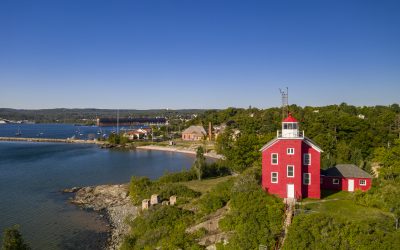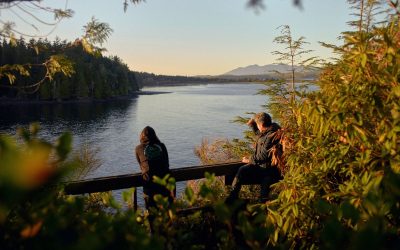Michael Eisner, ex-CEO of Disney, once said, “A brand is a living entity – and it is enriched or undermined cumulatively over time, the product of a thousand small gestures”.
Destination brands live and breathe through ongoing collaboration. Thousands of small actions and conversations shape the larger story that makes a place what it is.
Local tourism operators may not always step back to look at the bigger brand story. Those who need to focus on their next 50 dinner reservations or hotel room nights might not realize their integral role within your destination’s brand, or how that story helps their guests decide to visit in the first place.
It can be hard to link brand development directly to revenue for individual businesses. But to find success, a destination needs to come together in a unifying vision that connects all tourism experiences and creates a compelling and unique experience.
Destination marketing organizations (DMOs) help people contribute to the brand story. “Your DMO can set a direction or cast a vision, but if you want people to buy-in, you have to bring them along. And it takes time to do that well,” says Sarah Prud’homme, Strategic Consultant at Destination Think.
Why should tourism businesses get involved?
DMOs need to orchestrate community involvement to help everyone succeed.
But busy people might reasonably ask why providing their valuable time, attention and input are worthwhile.
Here are 5 things tourism businesses and residents need to know to understand the value of destination-wide brand collaboration.
1. The success of your destination depends on collaboration toward common goals.
Individual experiences impact a visitor’s brand perception. DMOs can coordinate businesses to improve the customer journey and help visitors have an experience worth travelling for and raving about.
Different businesses have different roles to play. Your local museum might be one reason that guests visit, but those people also need to find somewhere to eat, sleep, and add activities to fill their itinerary. Yes, some businesses compete, but there are many more opportunities for cooperation.
Collaboration doesn’t stop with the visitor experience. Some tourism businesses work together to find stable financial support for destination marketing. The Tourism Business Improvement District (TBID) is one model. Facing public funding shortages for their DMOs, hotels in some destinations have united to create a TBID and secure revenue through a bed tax. This approach to funding began in the United States (see Visit Napa Valley) and is being replicated overseas by organizations like Visit Inverness and Loch Ness.
Businesses that understand their reliance on the community can help strengthen their destination’s reputation by getting involved in collective goals, no matter their particular role in the visitor experience or destination management.
As a rising tide lifts all boats, a successful destination helps its businesses succeed together.
2. Destination branding requires long-term thinking.
Promotional activities often focus on the short-term. But your destination brand is designed for success over the long term.

William Bakker, Chief Strategist at Destination Think
Think’s strategists have found that operators are sometimes skeptical of destination brand processes because they don’t see the immediate impact it will have on their businesses.
“Branding is somewhat abstract, so it’s hard for people to understand its value,” says William Bakker, Destination Think’s Chief Strategist. “It’s often a beauty contest about logos and taglines. The reality is that a brand strategy is much more than that”.
“Making a direct correlation to revenue is tough. But consider some of the world’s best-known brands like Apple or Coca-Cola. They are valuable because they have built customer loyalty and trust over time. That trust and reputation make every new product from those companies more credible and appealing.
“Likewise, a strong tourism brand will increase the value and reputation of the tourism product – the experiences available to visitors within the destination.”

Frank Cuypers, Senior Strategic Consultant at Destination Think
Frank Cuypers, Senior Strategic Consultant at Destination Think, agrees that branding isn’t about paying next month’s bills. “A successful destination brand will allow a destination to gradually generate more interest and more revenue from the right visitors, year over year.”
Nashville Convention & Visitors Corp (NCVC) discovered this first hand after developing the Music City USA brand with its stakeholders in 2003. The city-wide focus on Nashville’s musical identity has paid off in record-setting visitation numbers.
Sometimes a brand’s impact is also easy to see in times of crisis. Tourism in Paris was able to rebound after declining following the terrorist attack of November 2015 because of the strength of the city’s overall brand.
“They faced these attacks, and in no time, they recovered,” says Cuypers. “Why? Their brand isn’t about safety, it’s about the positive experiences they continue to provide.”
The destination’s long-term reputation was strong enough to overcome the understandable safety concerns in the immediate aftermath.
“In times of adversity, people do not choose traditional marketing campaigns, they choose branding. They go back to the basics, to who they are.” Destinations become resilient by investing in a brand built on identity.
3. Aligning operator origin stories with a destination brand creates a strong destination story.
Operators also express their business’ core identity through a destination brand story. Business owners can ask themselves four questions to find their role within the destination brand:
- What is the destination brand? This stems from your destination’s identity, or Place DNA®. It’s the overarching story your destination’s people are telling and experiencing.
- What is my business’ origin story? Your business has its own DNA. How did it begin? What are its values? What experiences does it provide to visitors? We call this an origin story.
- How does the origin story overlap with the destination brand? This is your chapter within the destination’s story. With this question, you can support the destination while remaining true to your business’ unique experiences.
- How can you support the destination brand? Businesses can often start to contribute to the larger story in small ways.
For example, Tourism Vernon’s Place DNA® process revealed that being a four-season destination was an important strand of the Vernon story. Local businesses like hotels, for example, can begin to participate in small ways by using visuals that reflect the four seasons.
“In a subtle way that doesn’t involve too much effort, we’re already now moving towards creating a more cohesive experience,” says Bakker.
4. Destination brands can help operators focus their limited marketing budgets.
The destination brand can also help businesses save time on promotion. Where appropriate, owners can access their DMO’s media assets like images and videos that are made available for common use. This way, they automatically create alignment with the destination brand and use the work that’s already been done by the destination brand to articulate the unique selling propositions (USPs) that relate to location.
Quick tip for operators: Ask your DMO what brand outputs it has available and under what circumstances you can use them.
5. DMOs want success for everyone in the destination.
Most importantly, keep an open mind during the destination branding process. Destination brand managers and strategists are passionate about travel and the place where they live. They navigate challenging business problems to make the whole community a better place to live and work, and they thrive on positive cooperation with the community.
As Bakker says, “Avoid being skeptical of your DMO’s strategy. Instead, learn to collaborate with and support the staff. They have your short and long-term interest in mind in everything they do.”
Business owners: Read William Bakker’s 6 things tourism businesses should know about their DMO.
DMO executives: Find out how Tourism Calgary used a team-wide, collaborative process for destination branding and strategic planning. Contact us to learn how we can help your DMO.
Featured image credit: Adobe Stock










0 Comments